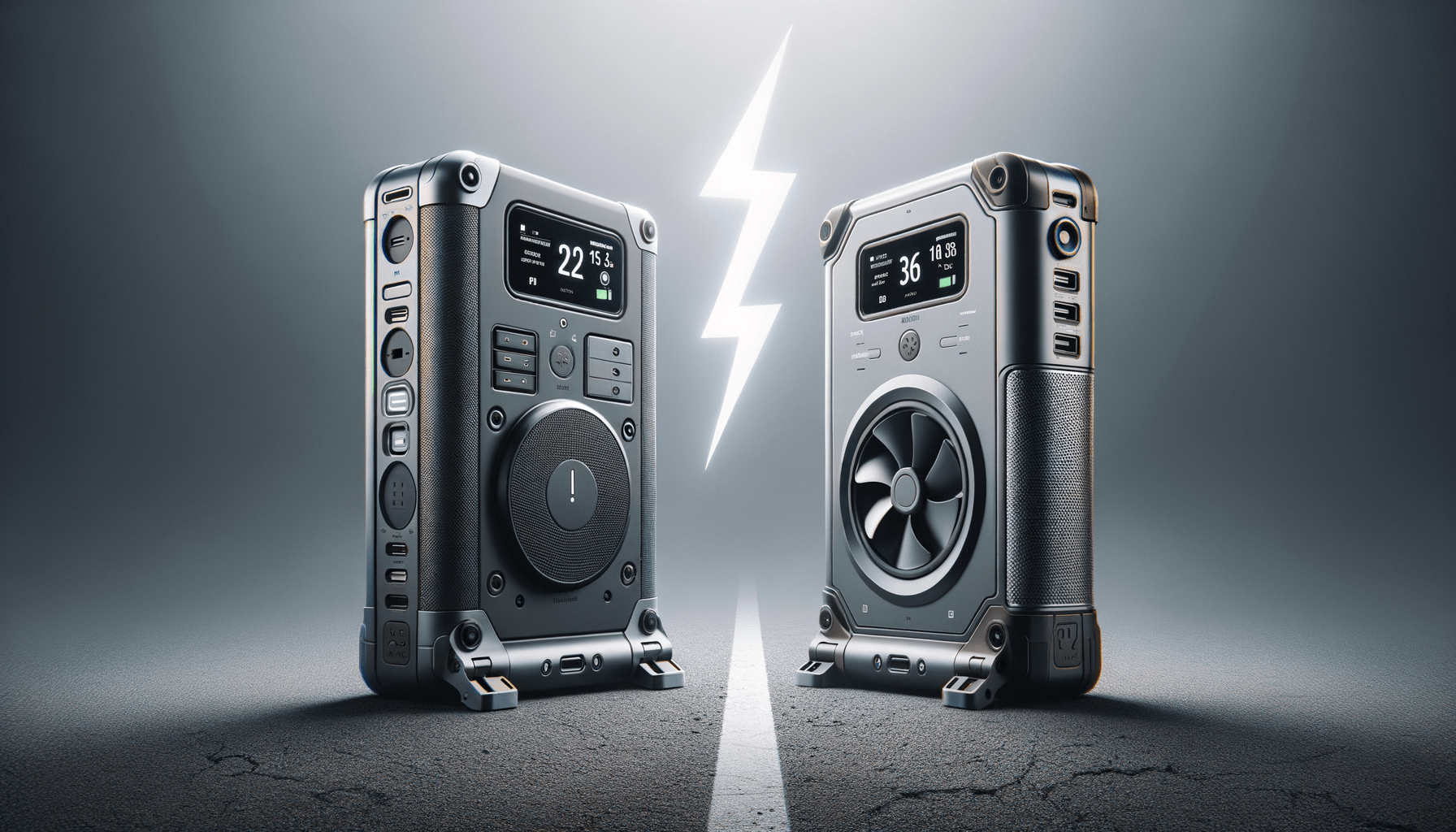When it comes to portable power solutions, Renogy is a brand that often comes to mind. Two powerhouses in their lineup, the Renogy 1000 and Renogy 500, offer impressive specs, but choosing the right one can be a nuanced decision. Below, we break down the technical elements of both to help you make an informed choice.
Design and Build
Starting with their outer shells, the Renogy 1000 is housed in a robust SGCC steel case, boasting durability for tougher environments. In contrast, the Renogy 500’s build specifics aren’t detailed, but it’s notably lighter, enhancing its portability for on-the-go usage.
Battery and Capacity
Battery capacity is a defining factor for power stations. The Renogy 1000’s hefty 998Wh battery using EV-grade LiFePO4 technology means more power and longer life with up to 3000 cycles. The 500 model, while smaller at 495Wh, is still substantial, powering your needs with the added benefit of a lighter weight and smaller size.
Pure Sine Wave AC Outlets
Both models have pure sine wave inverters, ensuring clean, appliance-friendly power. The Renogy 1000 triples down with six AC outlets compared to the Renogy 500’s three, accommodating a wider array of devices simultaneously.
Fast Recharging and Solar Compatibility
iTurbo makes its mark in both the Renogy 1000 and 500 with rapid recharging capability. Solar compatibility via Renogy E.FLEX panels with integrated MPPT technology is a win for both, though the Renogy 1000’s larger capacity gives it an edge in efficiency and storage.
Power Output and Expansion
The Renogy 1000’s total output at 2100W outperforms the Renogy 500’s 800W. It’s expandable, too—parallel kits can double its output, a feature not underscored in the Renogy 500’s specs. Meanwhile, the Renogy 500 also offers parallel connection, potentially increasing its usefulness.
Emergency Power and Reliability
Both stations switch to battery power in an instant (under 20ms) during outages, but the 1000’s larger capacity means longer support for critical devices. Its broader operating temperature range suggests it’s built to endure more extreme conditions.
Interface and Control
The Renogy 500 steps ahead with its integrated DC HOME app compatibility, allowing for sophisticated remote monitoring and control, which isn’t explicitly noted in the 1000’s features.
| Feature | Renogy 1000 | Renogy 500 |
|---|---|---|
| Battery Capacity | 998Wh | 495Wh |
| Inverter Output | 1500W (6 AC Outlets) | 800W (3 AC Outlets) |
| Surge Capability | 3000W with iBoost | 1600W |
| Recharging | iTurbo + Solar | iTurbo + Solar |
| Power Expansion | Parallel Capability | iStack function |
| Remote Control | Not Specified | DC HOME app |
| Weight | 41 lb / 18.6 kg | 16.71 lb / 7.58 kg |
| Temperature Rating | -4°F to 104°F | — |
| Safety Certifications | UL Listed | — |
Final Thoughts
The Renogy 1000 is built for power and endurance with a larger capacity and more outlets, suiting home backup needs and extended outdoor trips. The Renogy 500 shines in portability and tech-savvy features, great for lightweight camping and quick power-ups.




Leave a Reply